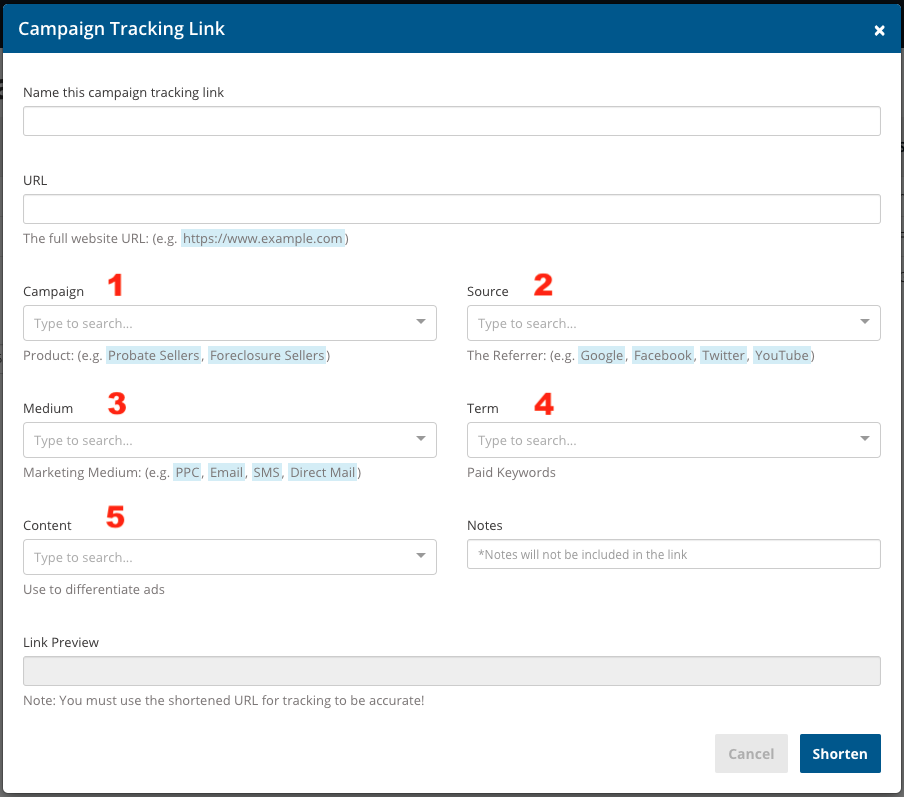What is a UTM?
A UTM, which is short for Urchin Tracking Module, is a tool that allows you to track your web traffic in detail. UTMs are pieces of code that are added to a link or a URL. When a lead uses one of your UTM links it will assist you in tracking your different marketing campaigns.
Every UTM has a few different parts: the campaign name, source, medium, term, and content.

Here are the different parts of the example above:
- Campaign: seller
- Source: Facebook
- Medium: post
- Term: foreclosure
- Content: distressed
Each part of the UTM has a specific purpose. Let’s review each one.
Campaign - required: The Campaign or Name identifies what you are driving traffic to, like the name of a specific product or campaign.
Source - required: The Campaign Source refers to the source of the traffic, also called the referrer. For example, this could be Twitter, Google, or Craigslist. The Campaign Source is often the platform you used to create the content, like a post on Facebook.
Medium - required: The Campaign Medium is the specific marketing medium (post, tweet, banner ad, email, etc.) that the traffic came from. Combined with the Source information, you can tell exactly which ad, post, or email someone clicked on to get to your site.
Term – optional: The Campaign Term allows you to track keywords, like paid (Google AdWords) keywords. Unlike Name, Source, and Medium, the Campaign Term is optional when creating a UTM.
Content – optional: The Campaign Content refers to the content of the marketing medium. This can help you track two different ads that you run on the same channel (like Facebook), which is especially helpful when you’re doing an A/B test. Like the Campaign Term, Campaign Content is an optional part of the UTM tags you create.